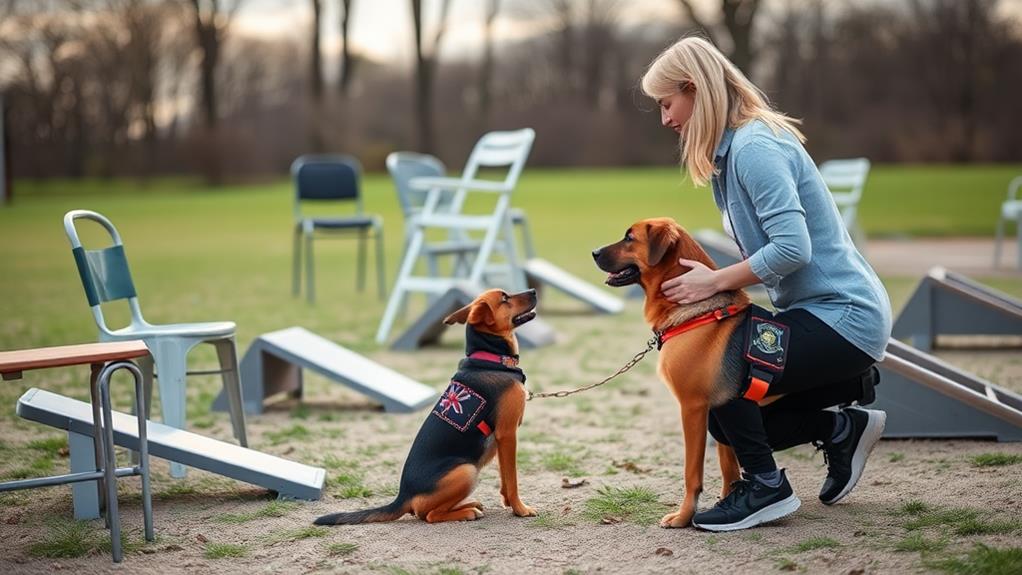Training service and assistance dogs involves several essential techniques that enhance their effectiveness. Start with basic obedience commands like sit, stay, and come to establish control. Socialization is pivotal, so expose your dog to various environments and stimuli to build confidence. Focus on task-specific training tailored to your needs, using consistent commands and positive reinforcement like treats and praise. Implement public access training to guarantee your dog remains focused amidst distractions. Ongoing evaluation and bonding activities help maintain skills and strengthen your partnership. Explore these techniques further to certify your service dog excels in their role.
Understanding Service Dog Roles
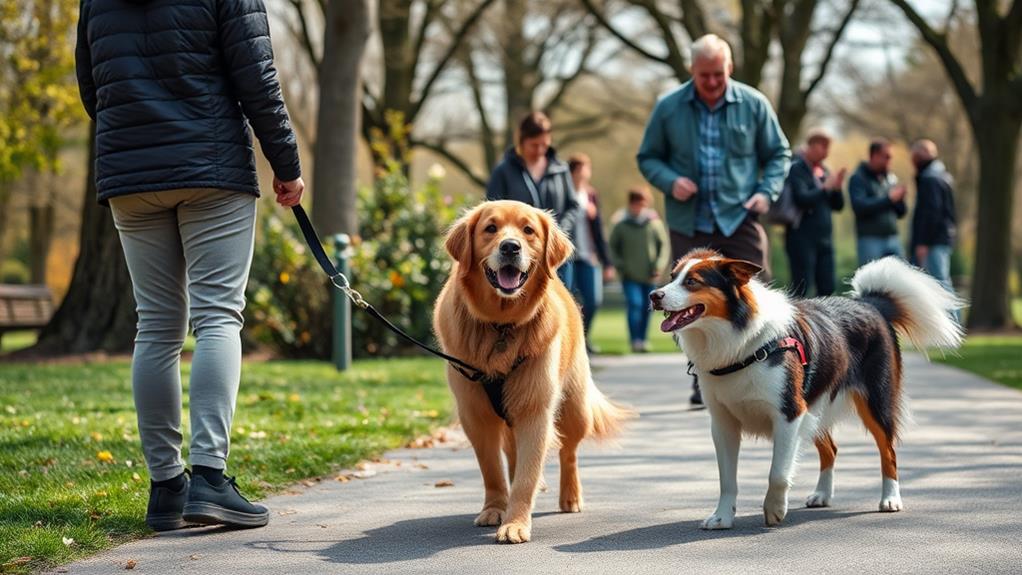
Understanding the indispensable roles service dogs play is essential for both trainers and handlers. These remarkable animals aren't just pets; they're indispensable partners that provide support and assistance to individuals with disabilities. By recognizing their roles, you can better appreciate the bond between handler and service dog.
Service dogs perform various tasks tailored to their handler's needs. For those with mobility challenges, they can retrieve items, open doors, or provide balance. If you're dealing with anxiety or PTSD, your service dog can sense changes in your mood and offer comfort during stressful moments. These dogs are trained to remain focused, even in distracting environments, ensuring they remain reliable in any situation.
You'll find that service dogs also enhance their handlers' independence. They help individuals navigate public spaces, reducing reliance on caregivers. Understanding these roles enables you to train effectively and build a strong relationship based on trust and teamwork. As you learn about these incredible capabilities, you'll see how pivotal proper training and socialization are in shaping a service dog's effectiveness. Embrace this knowledge, and you'll be better equipped to support both trainers and handlers in their journey.
Essential Obedience Commands
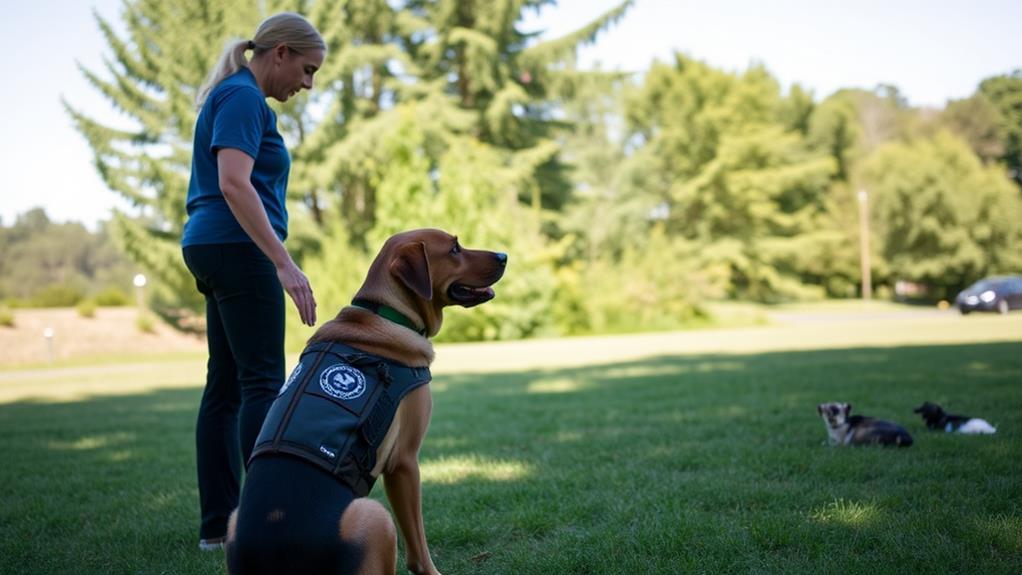
When training service dogs, mastering essential obedience commands is imperative for their success and your safety. These commands form the foundation of communication between you and your dog, guaranteeing they can respond appropriately in various situations. Consistency and patience during training are indispensable.
Here are some key commands you should focus on:
| Command | Purpose | Benefit |
|---|---|---|
| Sit | Helps with control | Keeps the dog calm |
| Stay | Prevents unwanted movement | Ensures safety in public |
| Come | Encourages recall | Strengthens your bond |
Start with simple commands and gradually introduce more complex ones. Use positive reinforcement, like treats and praise, whenever your dog correctly follows a command. Regular practice solidifies their understanding and response to these commands.
Moreover, confirm your dog can respond to these commands reliably in different environments, as service dogs often face distractions. With time and effort, your service dog will not only become obedient but will also enhance your independence and confidence in daily life.
Socialization Techniques
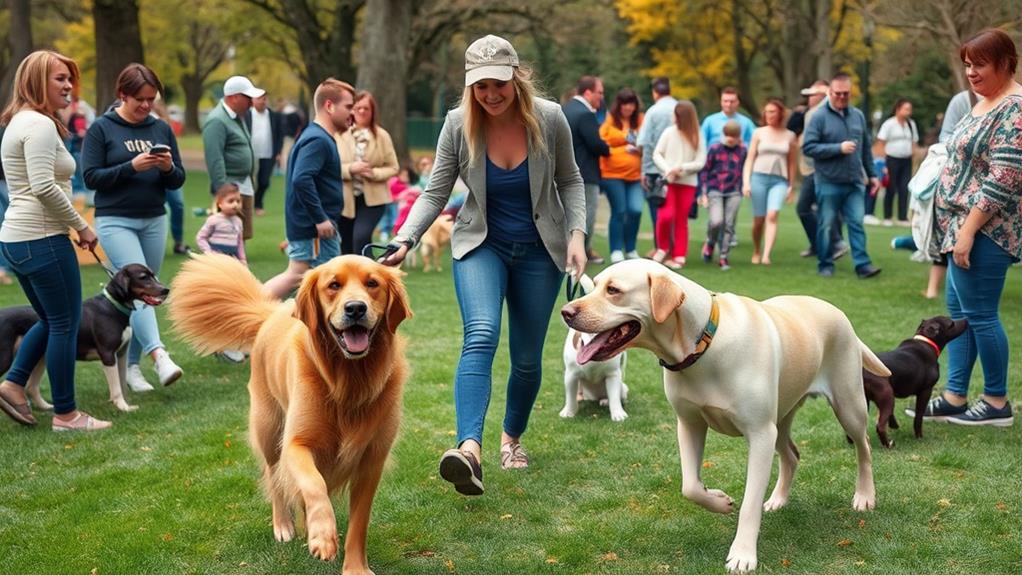
Training your service dog goes beyond just obedience commands; socialization is equally important. Proper socialization helps your dog become well-adjusted and confident in various environments. Start by exposing your dog to different people, animals, and situations. This exposure can include visits to busy parks, pet-friendly stores, or community events.
When introducing your dog to new experiences, keep it positive. Use treats and praise to reward calm behavior. Gradually increase the level of difficulty, starting with less crowded places before moving to more chaotic settings. Socialization should be a fun process, not overwhelming.
Also, encourage interactions with other dogs. Arrange playdates with well-mannered dogs to teach your service dog appropriate social cues. Remember, it's crucial to monitor your dog's body language. If they seem anxious or scared, give them a break and try again later.
Consistency is indispensable, so make socialization a regular part of your routine. The more experiences you provide, the more adaptable your service dog will become. Ultimately, effective socialization lays the groundwork for a confident and capable service dog, ready to assist you in daily life.
Task-Specific Training

Task-specific training is essential for equipping your service dog with the skills they'll need to assist you effectively. Each service dog's training should be tailored to your individual needs and the tasks they'll perform. Begin by identifying the specific tasks that will aid you, such as retrieving items, alerting you to sounds, or providing balance support.
Once you've outlined these tasks, break them down into manageable steps. This helps your dog learn each component without becoming overwhelmed. For instance, if you want your dog to retrieve items, start with simple fetch exercises before gradually introducing distractions and the specific items they'll need to retrieve for you.
Consistency is key during this training phase. Use the same commands and cues each time you practice to avoid confusion. Practice regularly, integrating these tasks into your daily routine, so your dog understands when and how to to facilitate you.
Remember to track your dog's progress and adjust your training methods as needed. This guarantees you're both on the right path, making the training process smoother and more efficient. Ultimately, task-specific training empowers your service dog to provide the assistance you need.
Positive Reinforcement Methods

Positive reinforcement methods play an essential role in shaping your service dog's behavior and ensuring effective training. By rewarding desired behaviors, you create a positive association, making your dog more likely to repeat those actions.
Use Treats: Choose high-value treats that your dog loves. When your dog performs a desired action, immediately reward them with a treat to reinforce the behavior.
Verbal Praise: Combine treats with enthusiastic verbal praise. Your tone should convey excitement, as this helps your dog understand that they've done something right.
Clicker Training: A clicker can be a powerful tool. When your dog performs the desired behavior, click the device, followed by a treat. This helps your dog connect the click sound with positive reinforcement.
Playtime: Use play as a reward. If your dog enjoys fetching or tugging, incorporate playtime as a reward for good behavior. This approach can motivate your dog even more than treats alone.
Leash Training Strategies
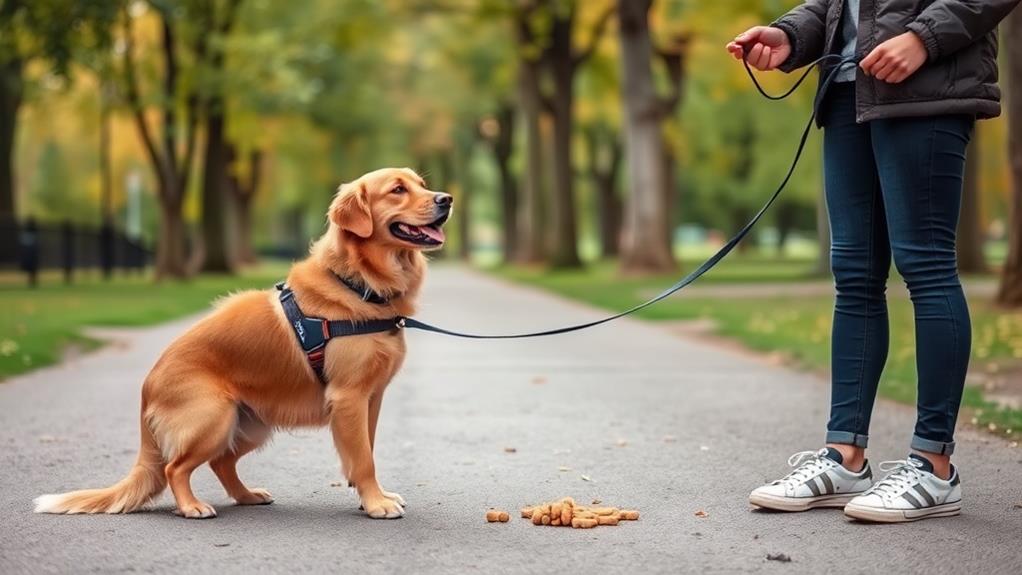
Mastering leash training is essential for ensuring your service dog behaves well in various environments. Start by choosing a suitable leash and collar or harness. A standard leash, around six feet long, gives you control without restricting your dog's movement.
When you begin, practice walking in a quiet area without distractions. Hold the leash firmly but gently to maintain control while allowing your dog some freedom to explore.
Use positive reinforcement to encourage good behavior. Reward your dog with treats or praise when they walk beside you without pulling. If your dog starts to pull, stop walking immediately. Wait for them to return to your side before continuing. This teaches them that pulling won't get them where they want to go.
Incorporate turns into your training. Change direction frequently to keep your dog engaged and focused on you. This helps them learn to pay attention while walking.
Lastly, practice regularly in different environments, gradually increasing distractions. Consistency and patience are key; leash training takes time, so stay committed. With these strategies, you'll help your service dog develop excellent leash manners, ensuring a smooth experience for both of you.
Desensitization Practices
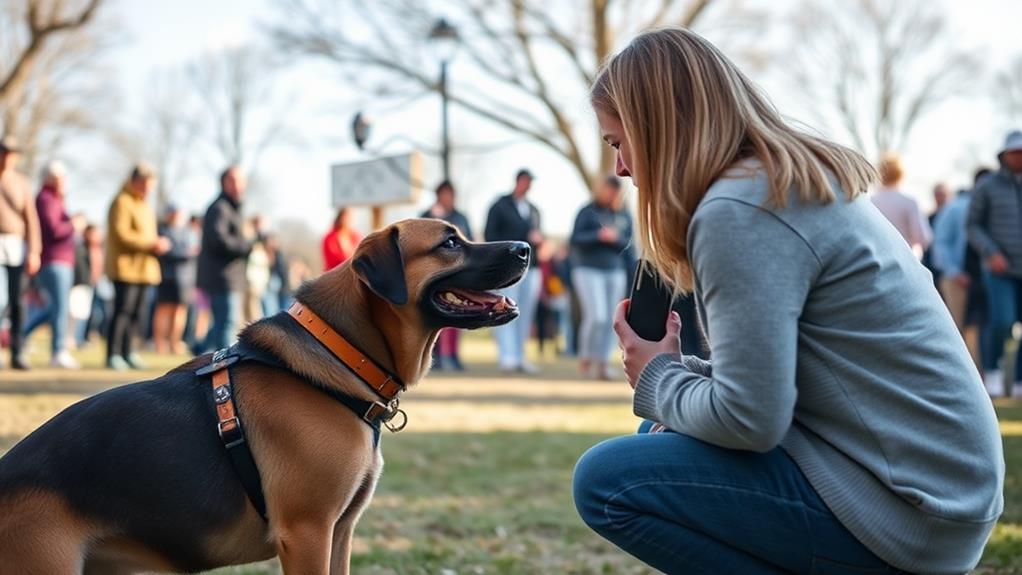
Desensitization practices are essential for helping your service dog adjust to various stimuli in their environment. By gradually exposing your dog to different sounds, sights, and situations, you can reduce their fear or anxiety.
- Identify Triggers: Start by determining what specific stimuli cause stress for your dog. This could be loud noises, crowds, or unusual objects.
- Controlled Exposure: Introduce these triggers in a controlled setting. For instance, if your dog is scared of thunder, play a recording at a low volume while providing treats.
- Gradual Increase: Slowly increase the intensity of the trigger over time. As your dog becomes more comfortable, raise the volume or intensity of the situation while continuing to reward calm behavior.
- Positive Reinforcement: Always use positive reinforcement. Offer treats, praise, or playtime when your dog remains calm in the presence of the trigger. This helps them associate the stimuli with positive experiences.
Public Access Training
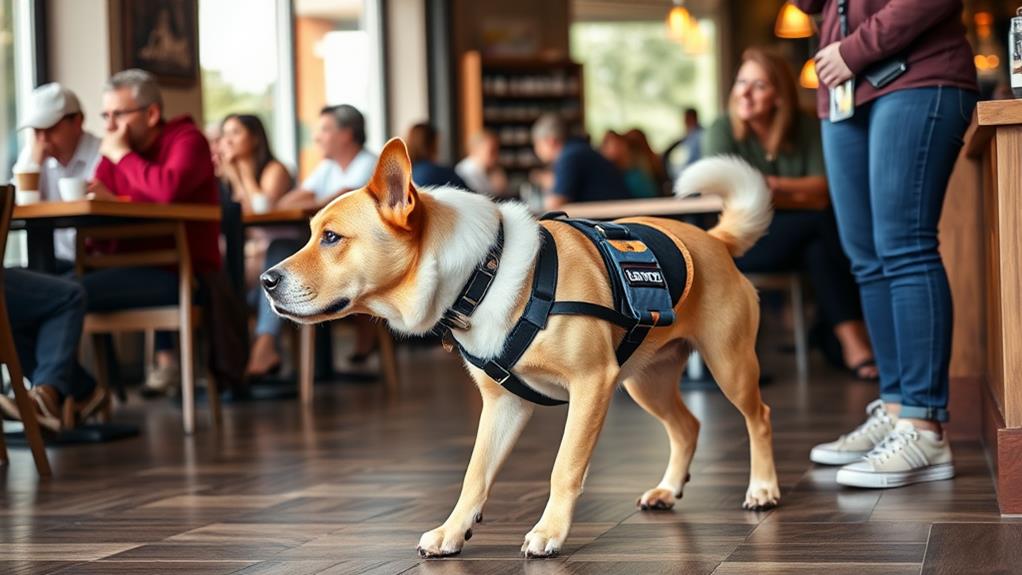
Once your service dog is comfortable with various stimuli, it's time to focus on public access training. This training is paramount for ensuring your dog can behave appropriately in public spaces.
Start by exposing your dog to different environments, such as stores, restaurants, and parks. Gradually introduce distractions like crowds, loud noises, and other animals.
While in these environments, practice commands like "sit," "stay," and "heel." Consistency is key. Make sure your dog understands how to respond to these commands amidst distractions. Reward your dog for good behavior with treats or praise, reinforcing positive actions.
Also, teach your dog to ignore distractions, such as food on the ground or people approaching. This will help them maintain focus on you and their tasks. It's indispensable to simulate real-life scenarios during your training sessions to prepare your dog for actual public encounters.
Ongoing Training and Evaluation
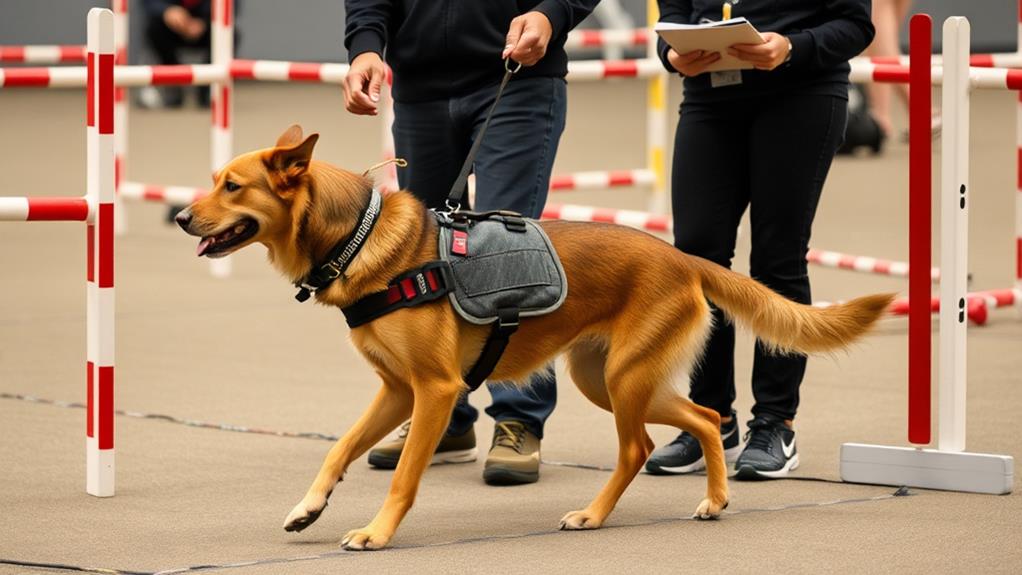
Continuing your service dog's training is [CRITICAL] for maintaining their skills and ensuring they adapt to new challenges. Ongoing training not only reinforces existing commands but also helps your dog learn new tasks as your needs evolve. Regular evaluation is [ESSENTIAL] to assess their progress and address any issues that may arise.
Regular Practice: Set aside time each week for training sessions. Consistency keeps your dog sharp and responsive.
New Environments: Expose your dog to different settings and distractions. This helps them generalize their skills and adapt to varied situations.
Behavior Check-ins: Monitor your dog's behavior during daily activities. Look for signs of stress or confusion, and adjust your training as needed.
Professional Support: Consider working with a certified trainer for periodic evaluations. They can provide insights and strategies to enhance your training routine.
Building a Strong Bond
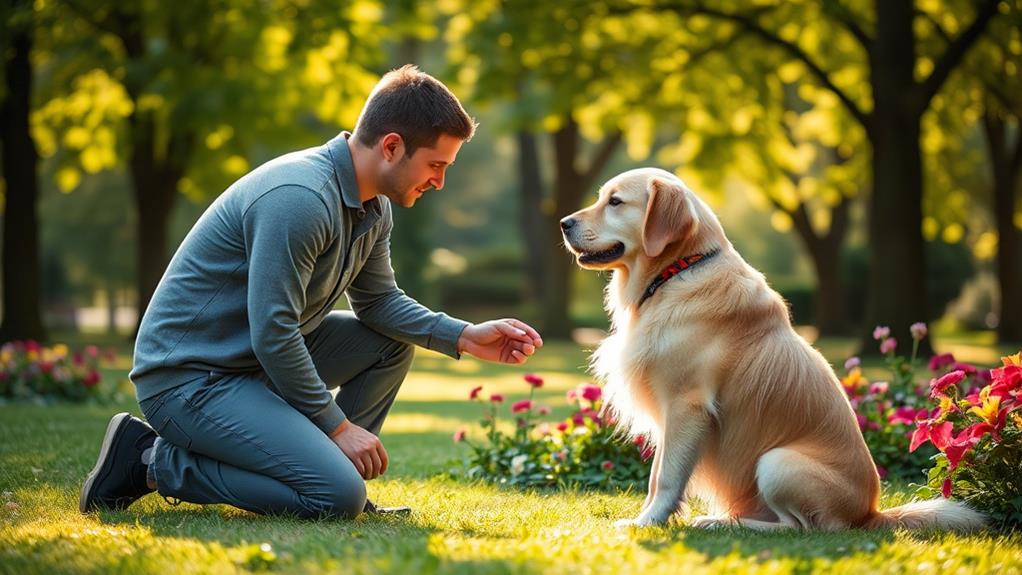
Building a strong bond with your service dog is essential for effective teamwork and trust. A solid relationship enhances communication and guarantees your dog feels secure in their role. Start by spending quality time together. Engage in activities like walks, play, and training sessions that allow you to connect and understand each other's cues.
Consistency is key. Use the same commands and routines, so your dog knows what to expect. Reinforce positive behaviors with praise and treats, which fosters a sense of accomplishment and trust. Be patient and empathetic; your dog will pick up on your emotions, so staying calm and encouraging helps build resilience.
Socialization is also pivotal. Expose your service dog to various environments and situations, allowing them to adapt and learn. This not only strengthens your bond but also prepares them for their tasks in real-world scenarios.
Frequently Asked Questions
What Are the Legal Requirements for Service Dog Training?
You need to know that legal requirements for service dog training vary by region. Generally, trainers must guarantee the dog is trained to perform specific tasks related to a person's disability, but certification isn't mandatory.
Can Any Dog Become a Service or Assistance Dog?
Not every dog can become a service or assistance dog. They need specific traits like temperament, behavior, and trainability. You should evaluate your dog's abilities before considering them for such important roles.
How Much Does It Cost to Train a Service Dog?
Training a service dog can cost between $15,000 and $30,000. This investment guarantees your dog learns essential skills, providing invaluable support. Consider your budget and explore options like local organizations or fundraising for assistance.
How Long Does Service Dog Training Typically Take?
Service dog training typically takes six months to two years, depending on the tasks needed and the dog's temperament. You'll find consistency and patience are key factors in ensuring your dog's successful training journey.
What Health Checks Are Necessary for Service Dogs?
Your service dog should undergo regular health checks, including vaccinations, parasite control, and dental care. Observing their weight and overall condition is crucial to maintain their health and performance in assisting you effectively.
Conclusion
In the end, mastering necessary training methods for service and assistance dogs is crucial. By comprehending their functions and concentrating on obedience, socialization, and task-specific training, you're laying the groundwork for a prosperous partnership. Remember, it's not merely about instructions; establishing a robust bond through positive reinforcement and ongoing evaluation is key. So, as you commence this journey, consider yourself the conductor, orchestrating a magnificent symphony of trust and companionship with your canine companion.

